Best Mirin Reviewed | Key Ingredient For Asian Cooking
If you’re cooking Asian, especially Japanese recipes, you will certainly come across an ingredient called mirin.
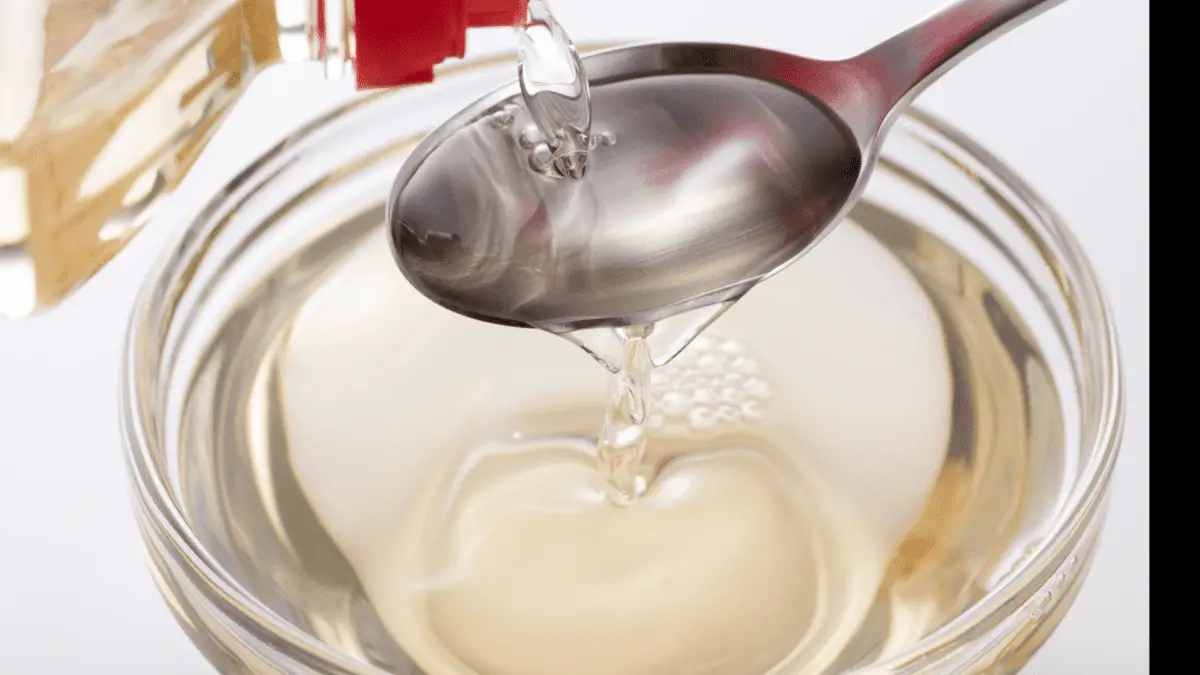
Mirin is a type of rice wine that has a sweeter taste, and it tastes great in dishes like teriyaki or sushi. It’s also used to make sauces, glazes, marinades, and salad dressings. In fact, mirin is a key ingredient in teriyaki sauce, along with soy sauce.
But the thing about mirin is that not all mirin is the same. If you want your food to taste amazing, you have to use the best quality mirin.
In this post, I’m sharing my picks for the best mirin you can use in your recipes to make them taste great.
| Best mirin | Images |
| Best mirin for cooking (aji-mirin): Kikkoman Manjo Aji-Mirin | 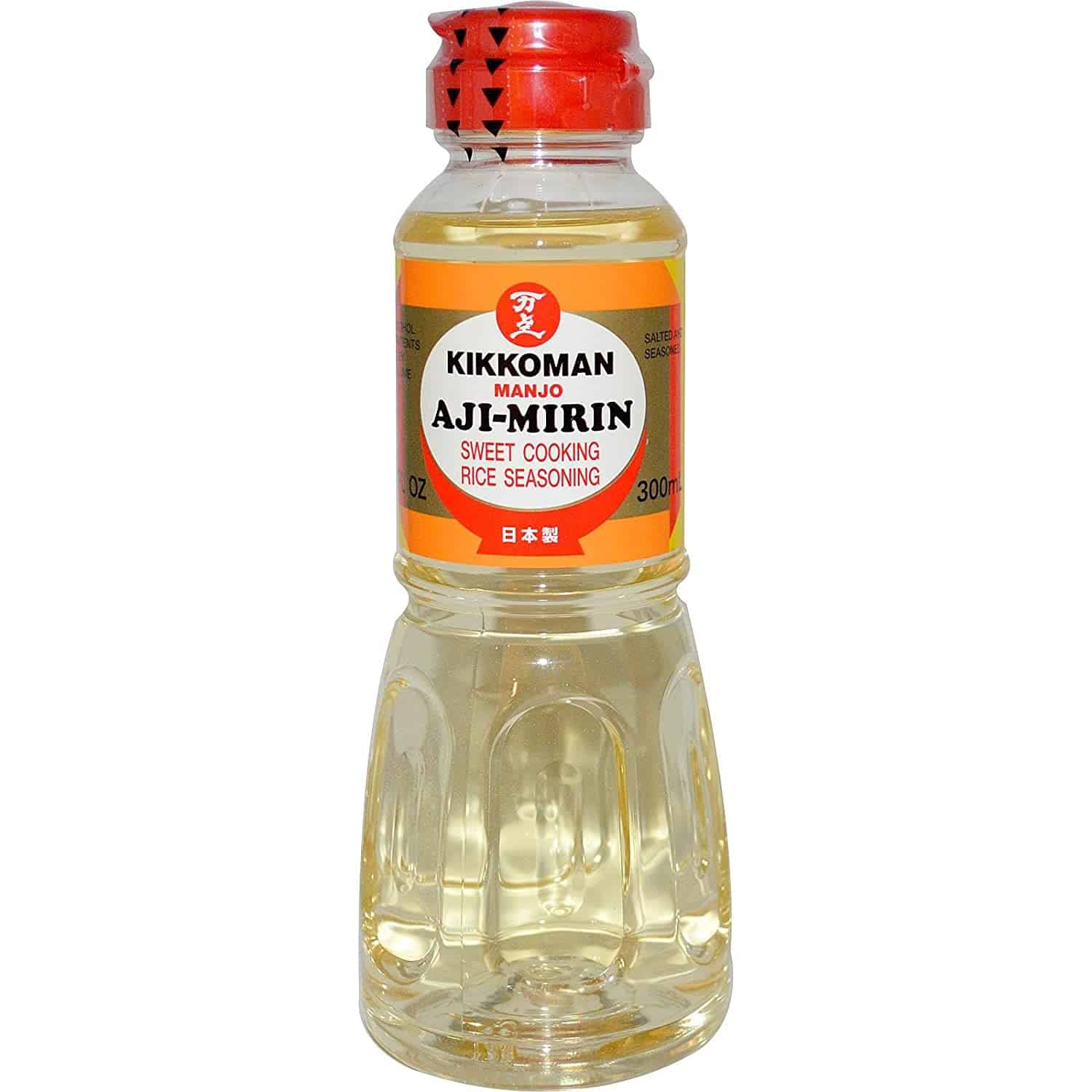 (view more images) |
| Best budget mirin: 52USA Mirin Cooking Wine |  (view more images) |
| Best mirin for dipping & sauces: Mizkan Sweet Cooking Seasoning |  (view more images) |
| Best hon mirin & best low sodium: Hinode Japan Premium Junmai Hon-Mirin | 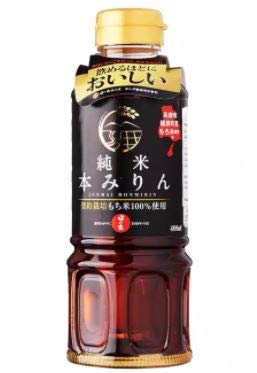 (view more images) |

Check out our new cookbook
Bitemybun's family recipes with complete meal planner and recipe guide.
Try it out for free with Kindle Unlimited:
Read for freeIn this post we'll cover:
Buying guide
There are different types of mirin out there, and they’re used for cooking various recipes. Some mirin is more flavorful than others.
If you’re looking for a high-quality mirin to use in your cooking, there are a few things you should keep in mind:
Types of mirin
There are different types of mirin. Let’s discuss the most common ones.
Hon mirin
This is referred to as real mirin and has a 14% alcohol content and no salt.
For roughly 40 to 60 days, steamed glutinous rice, rice koji mold, and shochu (a distilled alcoholic beverage) are combined and fermented.
Hon mirin can be used for drinking as well as cooking since it’s very high quality.
Aji-mirin
This is known as seasoning mirin and has an 8-14% alcohol content. It’s used in cooking and resembles an amber color.
Aji mirin is not intended to be drunk and typically has additives that give it a sweeter taste.
Find out exactly how hon mirin differs from aji mirin and why it matters
Low-sodium mirin
This is a good option for people who are looking for a healthy option or trying to limit their sodium intake. It has a similar flavor as regular mirin but with less salt.
Fermented seasoning mirin
This mirin is similar to the hon mirin, but it also contains additives, so there’s no alcohol tax for it. It’s used for cooking because it’s very flavorful.
Alcohol & sugar content
Mirin has an alcohol content of about 14%. If you’re cooking with it, this content may impact the taste of your food.
Some people prefer to use a lower-alcohol mirin when cooking so that it does not overpower the other flavors of the dish.
Mirin also has a relatively high sugar content, with about 40 to 50g of sugar in every 100ml.
This can be good for adding flavor and sweetness, but it can also add extra carbohydrates or calories to your dish if you’re watching your diet.
Brand
Some of the most popular brands of mirin include:
- Kikkoman: this brand produces a tasty aji-mirin people use for cooking a variety of Asian recipes.
- Shirakiku: this brand is known for its high-quality hon mirin that’s perfect for use in recipes like teriyaki sauce or sushi.
- Mizkan: this is a popular Japanese sweet mirin that’s used for cooking and glazing.
- 52USA: this is a budget-friendly mirin used to cook foods like rice and noodle stir-fries.
Each of these brands produces high-quality mirin that tastes great in cooking. So whatever your needs and preferences, it’s easy to find one that is tasty!
Best mirin reviewed
Here are our top picks for mirin for all of your cooking needs.
Best mirin for cooking (aji-mirin): Kikkoman Manjo Aji-Mirin
The Kikkoman Aji-mirin is a tasty, versatile option for cooking Asian dishes.
The reason why this mirin is so popular in Japan and the West is that it’s just sweet enough to add flavor without being overpowering.
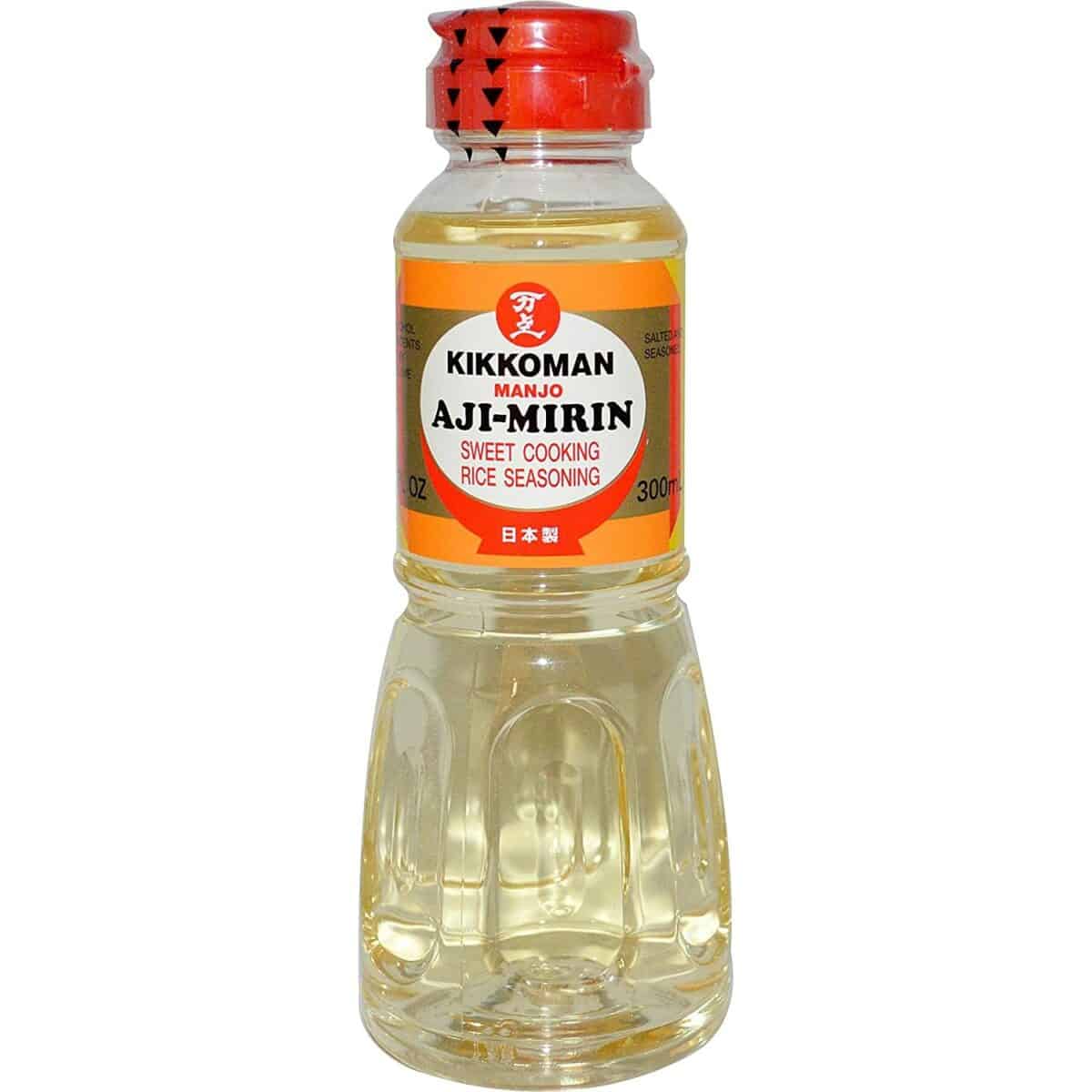
Kikkoman mirin is used for cooking stir-fries, sauces, glazes, soups, and more.
And since it’s pre-seasoned, you can easily add flavor to your food without having to worry about measuring specific seasonings and spices.
People use this mirin in all kinds of sauces, especially for making teriyaki sauce.
They also enjoy mixing it with soy sauce to make dipping sauces since it adds a flavor that seems extra fancy and lowers the sodium content of dipping sauce.
This mirin is also used for the popular ramen eggs recipe, where hard-boiled eggs are marinated in mirin, soy sauce, and sugar.
Kikkoman’s mirin is also good for steaming meat, vegetables, and seafood because it adds a rich, savory flavor.
Additionally, its mild sweetness helps to balance the flavors of your dish and make it taste more complex.
If you’re looking for a high-quality mirin that can help take your cooking to the next level, this is a great one to try because it’s affordable and flavorful!
Best budget mirin: 52USA Mirin Cooking Wine
52USA brand mirin is an affordable sweet cooking wine that’s perfect for people who want to experiment with cooking without spending a lot of money.
This mirin has a milder flavor than the others and a thinner consistency.
Therefore, I recommend using it for stir-fries, noodle and rice dishes, and braised meats and marinades in combination with other seasonings and condiments.

Some people also use it in glazes since the mild sweetness complements meat or vegetables well. I like to use this mild mirin to make sukiyaki and the famous sukiyaki sauce.
You can even use this for seasoning sushi rice because it has an umami flavor that makes it taste great with savory dishes.
This mirin won’t overpower the other flavors of your dish like stronger, more potent mirins can.
Overall, 52USA mirin is a good option if you’re looking for an affordable cooking mirin that is versatile and not overly strong.
Kikkoman vs 52USA mirin
Kikkoman mirin and 52USA mirin are both popular options for people who want to add a savory, sweet flavor to their dishes.
These are both cheap cooking mirins that are ideal for people who want to experiment with new recipes or lower their grocery budget.
However, there are some differences between these mirins.
Kikkoman is a well-known, high-quality Japanese brand that produces flavorful mirin with a sweeter taste and thicker consistency compared to the milder and thinner 52USA.
If you’re looking for a stronger flavor, Kikkoman is probably the better option.
But if you prefer somethingmilderd and want to use mirin for multiple purposes, 52USA mirin is a great choice.
Ultimately, both of these brands are excellent choices because they can be used in all types of recipes without overpowering the food’s taste.
Best mirin for dipping & sauces: Mizkan Sweet Cooking Seasoning
Mizkan mirin is one of the tastiest options for dipping sauces and marinades. It enhances the taste of the sauces because it has a sweet, rich, and acidic flavor.
Compared to Kikkoman, Mizkan mirin is better as a dipping sauce because it’s mild and doesn’t take away from the flavors of the seasoning rice and seafood.
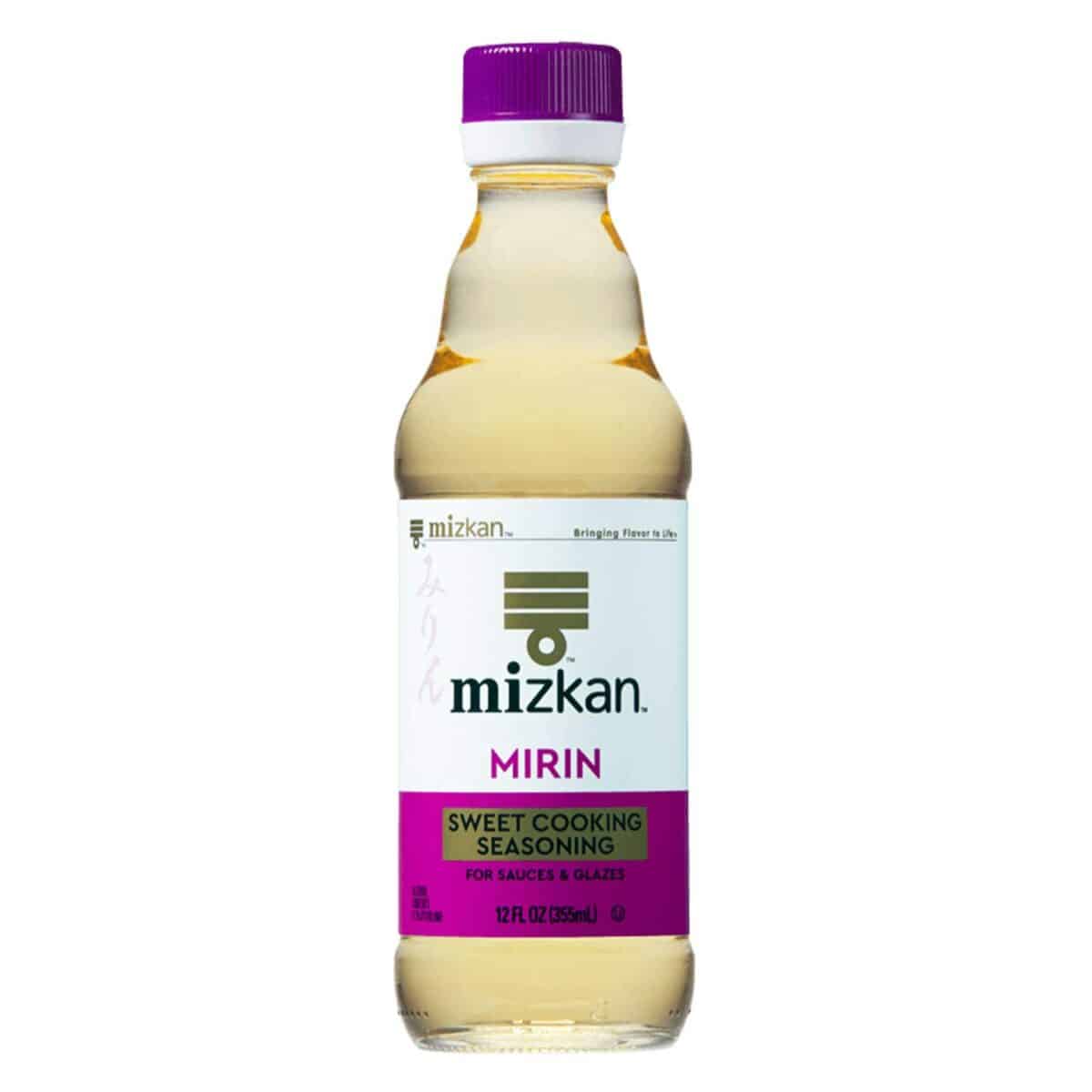
If you combine this mirin with soy sauce, it makes a delicious dipping sauce for sushi.
Mizkan mirin is also a good option for marinating meat and fish since it tenderizes and adds flavor.
This mirin is ideal for marinades because it adds a subtle sweetness that complements the umami flavors of meat and fish.
Some people even use it to marinate tofu, which gives it a slightly sweet and savory flavor. Of course, you can use it for making teriyaki sauce or glazes.
It can also be used in stir-fried udon or soba noodles, braised beef and veggies, tuna poke bowls, miso, and ramen soup, just to name a few.
This mirin adds a light flavor, but it smells incredible and gives the food a nice shine.
If you’re looking for a versatile option that’s perfect for cooking and dipping, Mizkan is definitely worth checking out!
Best hon mirin & best low sodium: Hinode Japan Premium Junmai Hon-Mirin
Hon mirin is the premium version of mirin, and Hinode Japan is one of the best options for its sweet flavor and rich color that enhances any dish.
But Hinode mirin is so pure you can even drink it like sake. Not to mention, you can add it to cocktails and tapas.

This mirin has a much darker brown color compared to the light yellow cooking mirin like Kikkoman.
This rich color comes from the rice that is used to make it, which gives hon mirin a full, savory flavor.
Unlike cheaper miring, Hinode hon mirin is pricier, but it’s made with mochi gome glutinous rice from Hyogo Prefecture, which is the best for making mirin.
It’s also worth noting that hon mirin is low in sodium, which makes it a good option if you’re looking to reduce the salt content in your diet.
Since this mirin is purer, it’s ideal for adding flavor to grilled meats and fish or marinating meats and vegetables.
I like to use this mirin to make sushi and sashimi dipping sauce because the taste is so rich and complex.
But be careful not to use too much hon mirin because it’s strong and you don’t want to overpower the food.
Overall, Hinode Japan premium hon mirin is the best option if you’re looking for a rich, full-bodied mirin you can use for both drinking and cooking.
Mizkan vs Hinode Hon Mirin
The main difference between Mizkan and Hinode hon mirin is the type of rice used to make it.
Mizkan is a cooking mirin made of mirin rice, while Hinode hon mirin is a premium version made with glutinous mochi gome rice.
The hon mirin can be used for cooking and drinking, whereas the cooking mirin can only be used for cooking.
Also, hon mirin is low sodium while Mizkan is not.
Mizkan tends to have a milder flavor and is slightly sweeter than hon mirin, and it’s also much cheaper.
Meanwhile, hon mirin has a richer and more complex flavor that makes it ideal for adding to marinades and sauces.
How do you use mirin in cooking?
Mirin is commonly used in marinades and sauces for meat, fish, and vegetables. You can also use it to glaze meats or add flavor to stir-fried noodles or soup.
Mirin is also commonly used to make teriyaki sauce when it’s combined with soy sauce, sake, and sugar.
Finally, don’t forget to include mirin in your sushi dipping sauce and add extra flavor to your sushi rice.
Simply mix a small amount with soy sauce and rice vinegar for a flavorful, aromatic accompaniment to your sushi.
Need some more inspiration? I’ve listed the 11 best recipes to cook with mirin here!
Should mirin be refrigerated after opening?
If you’re wondering how to store mirin, the answer depends on whether it’s a cooking mirin or hon mirin.
Cooking mirin does not need to be refrigerated, and it can be left at room temperature as long as it’s stored in an airtight container.
However, hon mirin should be refrigerated after opening so that it can be kept fresh and retain its flavor.
To prevent it from clumping or losing color, you should also keep hon mirin in the fridge and avoid exposing it to direct sunlight or high temperatures.
The shelf life of most mirin is about 24 months.
FAQs
What does good mirin taste like?
Good mirin has a sweet and rich flavor with just the right amount of acidity. It should enhance the flavors of your food without overpowering them, and it should add a nice shine to any dish.
What is the best substitute for mirin?
If you’re looking for a mirin substitute, you can use a mixture of rice wine vinegar, sugar, and water instead. Other options include dry sherry or cooking sherry, as well as sake.
Also read: Is mirin gluten-free?
Can I make mirin?
Yes, you can make mirin at home by combining rice wine vinegar with sugar and water. It’s best to cook the mixture slowly over low heat until the mixture is reduced to syrup.
Do I need mirin for cooking?
Mirin is not essential for cooking, but it’s a good ingredient to have on hand because it adds flavor and depth to your dishes.
What are the different types of mirin?
There are several different types of mirin available, including cooking mirin, seasoning mirin, and premium hon mirin.
Each type has a different flavor profile, color, and sugar content depending on the ingredients (especially rice) used to make it.
Takeaway
For your everyday recipes, the Kikkoman aji-mirin is the sweet and umami seasoning that you need.
It gives tons of flavor to foods like noodles and rice stir fry, marinated meats, chicken teriyaki, and ramen. Kikkoman is the overall top-rated mirin, with a perfect balance of sweetness and savoriness.
But if you’re looking for a premium mirin to add to your tapas or cocktails, then Hinode Japan Premium Hon Mirin is the best choice.
It’s made with mochi gome rice, which gives it a rich, complex flavor that goes well with delicate ingredients.
Don’t be afraid to experiment with mirin – it’s an incredibly versatile ingredient that will take your cooking to the next level.
Now you might be left wondering: why is quality mirin so expensive?
Check out our new cookbook
Bitemybun's family recipes with complete meal planner and recipe guide.
Try it out for free with Kindle Unlimited:
Read for freeJoost Nusselder, the founder of Bite My Bun is a content marketer, dad and loves trying out new food with Japanese food at the heart of his passion, and together with his team he's been creating in-depth blog articles since 2016 to help loyal readers with recipes and cooking tips.
